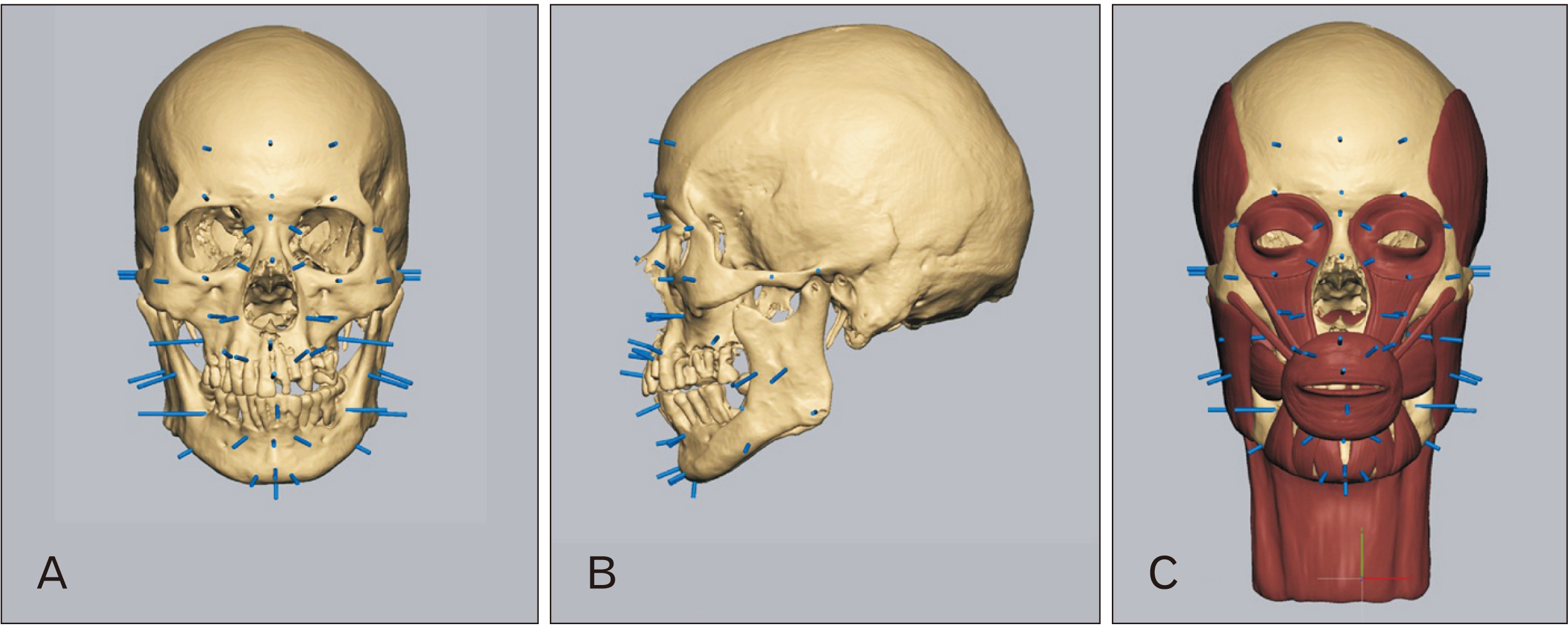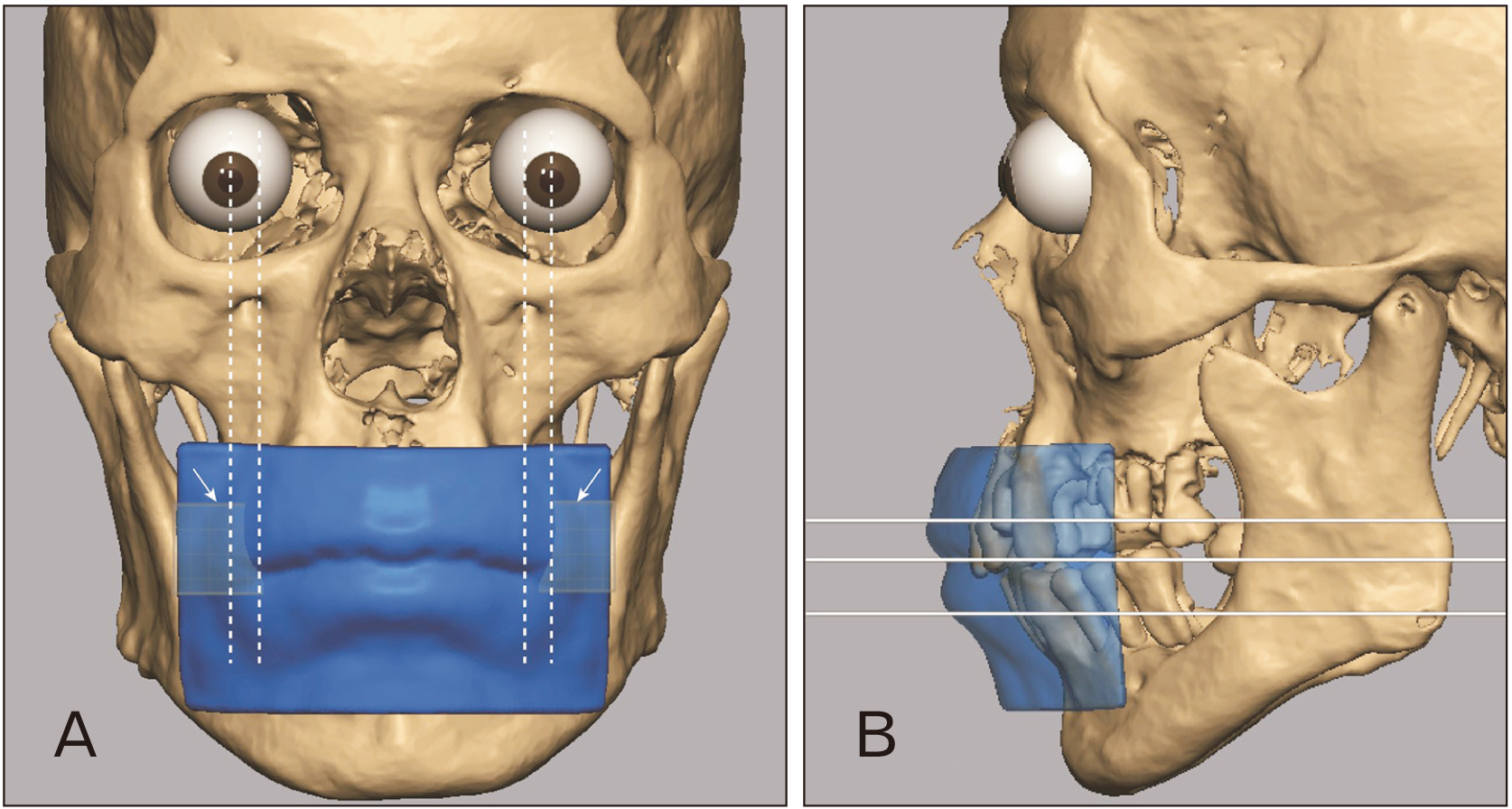Anat Cell Biol.
2022 Dec;55(4):512-519. 10.5115/acb.22.094.
A portrait drawing of the 17th century Korean scholar based on craniofacial reconstruction
- Affiliations
-
- 1Department of Forensic Medicine, National Forensic Service, Wonju, Korea
- 2Visual Communication Design, Sungkyunkwan University, Seoul, Korea
- 3Department of Forensic Medicine, National Forensic Service Seoul Institute, Seoul, Korea
- 4Department of Fashion Design & Marketing, Seoul Women’s University, Seoul, Korea
- 5Institute of Korean Archaeology and Ancient History, Kyung Hee University, Seoul, Korea
- 6Gumi City Hall, Gumi, Korea
- 7Seorabeol Institute of Cultural Heritage, Gyeongju, Korea
- 8Department of Diagnostic Radiology, Dankook University College of Medicine, Cheonan, Korea
- 9Department of Anatomy, Dankook University College of Medicine, Cheonan, Korea
- 10Department of Anatomy and Cell Biology, Seoul National University College of Medicine, Seoul, Korea
- KMID: 2537473
- DOI: http://doi.org/10.5115/acb.22.094
Abstract
- As a technique mainly hiring in forensic investigation field to identify the descents, craniofacial reconstruction (CFR) is also used in archaeology to create the faces from ancient or medieval human remains, when there is little information about his/her appearance. Eung-Cheok Ko (1531–1605) was a writer and scholar in the mid Joseon period. In January of 2019, His mummified body was found at Gumi, Kyeonsangbuk-do, Korea. The remains were anthropologically examined, and archaeological CFR was also requested for this case. This report reveals the case’s facial reconstruction process and his portrait that is drawn based on the 3-dimensional CFR result.
Keyword
Figure
Reference
-
References
1. Wilkinson C. 2004. Forensic facial reconstruction. Cambridge University Press;Cambridge: DOI: 10.1017/CBO9781107340961.2. Kim SM, Lee WJ, Cho JH, Wilkinson CM, Choi CU, Lee SS. 2020; An investigation of environmental factors influencing quantitative accuracy and recognition rate of craniofacial reconstructions. J Environ Biol. 41:539–48. DOI: 10.22438/jeb/41/3/MRN-1199.3. Lee IS, Lee EJ, Park JB, Baek SH, Oh CS, Lee SD, Kim YS, Bok GD, Hong JW, Lim DS, Shin MH, Seo M, Shin DH. 2009; Acute traumatic death of a 17th century general based on examination of mummified remains found in Korea. Ann Anat. 191:309–20. DOI: 10.1016/j.aanat.2009.02.006. PMID: 19345566.4. Shin DH, Lee IS, Kim MJ, Oh CS, Park JB, Bok GD, Yoo DS. 2010; Magnetic resonance imaging performed on a hydrated mummy of medieval Korea. J Anat. 216:329–34. DOI: 10.1111/j.1469-7580.2009.01185.x. PMID: 20070429. PMCID: PMC2829391.5. Lee WJ, Yoon AY, Song MK, Wilkinson CM, Shin DH. 2014; The archaeological contribution of forensic craniofacial reconstruction to a portrait drawing of a Korean historical figure. J Archaeol Sci. 49:228–36. DOI: 10.1016/j.jas.2014.05.022.6. Buikstra JE, Ubelaker DH. 1994. Standards for data collection from human skeletal remains. Arkansas Archeological Survey;Fayetteville: DOI: 10.1016/j.jas.2014.05.022.7. Choi CU, Lee WJ, Park JH. 2020; A study on the Korean orbital and cranial index using 3D skull CT image and morphometric analysis. Anat Biol Anthropol. 33:1–9. DOI: 10.11637/aba.2020.33.1.1.8. Hwang HS, Park MK, Lee WJ, Cho JH, Kim BK, Wilkinson CM. 2012; Facial soft tissue thickness database for craniofacial reconstruction in Korean adults. J Forensic Sci. 57:1442–7. DOI: 10.1111/j.1556-4029.2012.02192.x. PMID: 22621203.9. Lee WJ, Wilkinson CM, Hwang HS. 2012; An accuracy assessment of forensic computerized facial reconstruction employing cone-beam computed tomography from live subjects. J Forensic Sci. 57:318–27. DOI: 10.1111/j.1556-4029.2011.01971.x. PMID: 22073932.10. Guyomarc'h P, Dutailly B, Couture C, Coqueugniot H. 2012; Anatomical placement of the human eyeball in the orbit--validation using CT scans of living adults and prediction for facial approximation. J Forensic Sci. 57:1271–5. DOI: 10.1111/j.1556-4029.2012.02075.x. PMID: 22390613.11. Ryu JY, Park KS, Kim MJ, Yun JS, Lee UY, Lee SS, Roh BY, Seo JU, Choi CU, Lee WJ. 2020; Craniofacial anthropometric investigation of relationships between the nose and nasal aperture using 3D computed tomography of Korean subjects. Sci Rep. 10:16077. DOI: 10.1038/s41598-020-73127-8. PMID: 32999371. PMCID: PMC7527952.12. Fedosyutkin BA, Nainys JV. Iscan MY, Helmer RP, editors. 1993. The relationship of skull morphology to facial features. Forensic Analysis of the Skull: Craniofacial Analysis, Reconstruction and Identification. Wiley-Liss;New York: p. 199–213.13. Cultural Heritage Administration. 2007. Korean fortrait paintings: encountering with people in history. Nulwa;Seoul:14. Cha SC. 2019. The report of Joseon period grave found at Hapyeong-Myeon, Gemsan-Ri, Gumi city. Seorabeol Institute of Cultural Heritage;Gyeongju:15. Oh CS, Hong JH, Park JB, Lee WJ, Bianucci R, Piombino-Mascali D, Shin DH. 2018; From excavation site to reburial ground: a standard protocol and related ethics of mummy studies in South Korea. Asian J Paleopathol. 2:1–8. DOI: 10.1007/978-3-319-51726-1_3281-1.
- Full Text Links
- Actions
-
Cited
- CITED
-
- Close
- Share
- Similar articles
-
- Effects of the Periodical Spread of Rinderpest on Famine, Epidemic, and Tiger Disasters in the late 17th Century
- The Review and all the Problem to Solve on the Naeuiwonjabon: A preceding study on the Dongeuibogam
- Understanding of children Through Dravings
- Eyelid Shape of the Chosun Dynasty: Analysis of 101 Portraits
- The reconstruction of posttraumatic craniofacial deformity using modified lefort II and III osteotomy and autogenous iliac bone graft








